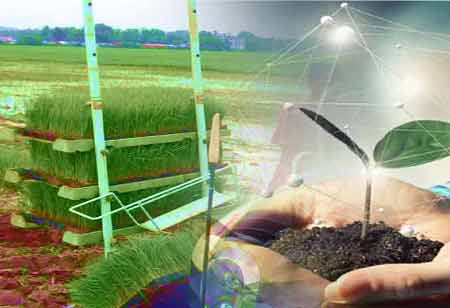Thank you for Subscribing to Agri Business Review Weekly Brief
Sustainable Agriculture Tools and Technologies
Incorporating technology and the latest tools has made the agriculture sector more productive, economical, and sustainable.

By
Agri Business Review | Tuesday, July 25, 2023
Stay ahead of the industry with exclusive feature stories on the top companies, expert insights and the latest news delivered straight to your inbox. Subscribe today.
Irrigation is an essential part of the process, and there must be the presence of innovative and adaptive methods which would help in extracting the maximum outflow. Significant headway has been made in irrigation as wireless monitoring systems overlook the process by determining the right amount of electricity, water, and chemical usage.
Fremont, CA: Incorporating technology and the latest tools has made the agriculture sector more productive, economical, and sustainable. Using data analytics clubbed with technology has revolutionized the process with overwhelming success. Technical innovations have made the industry prone to higher results and contributed to sustained growth.
Some of the modern practices that have evolved in the agricultural sector can be given as
Digital sensors
Digital sensors can be used to evaluate critical variables affecting the production rates, such as the pH levels, presence of chemicals, microclimate data collection, and aerial imaging of the fields. Sustained and stable modes of production are ensured as the producers are well informed about the varying nature of the factors affecting the production process.
Irrigation
Irrigation is an essential part of the process, and there must be the presence of innovative and adaptive methods which would help in extracting the maximum outflow. Significant headway has been made in irrigation as wireless monitoring systems overlook the process by determining the right amount of electricity, water, and chemical usage.
Drones
Farmers will continue to use drones for various aspects of their agricultural production as they harness the power of this compelling technology. A drone is capable of carrying a variety of sensors and cameras that are capable of monitoring crop growth conditions continuously. Aerial imagery can be captured by drones with cameras and sensors mounted on platforms. Drones were initially used for chemical spraying. “Multi-spectral imagery can be used to assess various aspects of plant health, weeds, and assets, ranging from simple visible-light photographs to multi-spectral imagery used to determine plant health.
Biotechnology
The advent of biotechnology has profoundly impacted agriculture. With the help of genetic engineering, crop breeders can now develop plants with specific traits. Agricultural breeding has been a part of agriculture for centuries, but biotechnology allows breeding to take place faster and more precisely.
Transgenic animals have developed that have increased growth rates, enhanced muscle mass, resistance to disease, or improved ability to utilize dietary phosphorus to reduce the impact of animal manure on the environment.
Fleet management
Advanced telemetry systems and GPS technology have positively affected agricultural fleet management. Several methods available can locate equipment when it is in use. The more advanced techniques can give accurate information, such as engine speed, fuel consumption, and upcoming maintenance, and provide immediate alerts.





